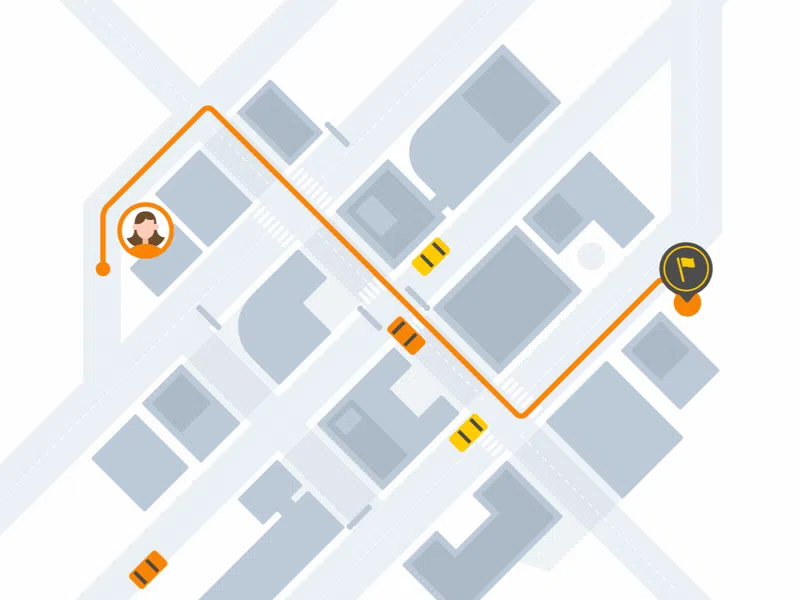Animation vs Live Action: A Comparison Guide
Animation or live action? Uncover the distinctions with our user-friendly guide, designed to simplify the decision-making process for creators venturing into the world of videos and choosing between animation vs live action.
Why animation is better than live action, as some say?
Animation is often a great choice because it lets you create anything you can imagine, without the limits of the real world. It’s easier to manage than filming real scenes, as you don’t have to worry about finding the perfect location or bad weather. Animation can appeal to everyone, from kids to adults, making it versatile. It’s especially good for simply explaining tricky ideas. Plus, it’s safer and more practical when you want to show something that would be too hard or dangerous to film in real life. This makes animation a really useful and fun way to create videos.
Understanding Animation
Animation involves creating moving images from illustrations or models, offering flexibility in visualizing concepts. It allows for vibrant characters and intricate worlds, suitable for abstract ideas and complex processes.
Exploring Live Action
Live action captures real-life footage, bringing authenticity and a tangible quality to storytelling. It excels in portraying genuine emotions and human experiences.
Advantages and Disadvantages of Animation vs Live Action Videos
Picking between live action and animation is like choosing between two superpowers – each with its cool perks and quirks.
Hollywood, the ultimate movie magic hub, has shown us the jaw-dropping wonders of animation in films like “Avatar” and the tear-jerking realness of live action in classics like “Forrest Gump.” And it’s not just big movies; think of those fun Coca-Cola ads with animated polar bears or the motivating Nike commercials shot with real people – both nailing their storytelling game.
Then, hop onto the internet scene, where animated explainer videos on YouTube (like Kurzgesagt’s cool science stuff) and real-life travel vlogs steal the show.
Let’s discuss why animation is better than live action, considering costs, timing, and real-life examples that make the video-making journey even more awesome.
Pros and Cons of Animated Videos
Animation is like the superhero of storytelling, swooping in with creativity and flexing some serious muscle. One of its most astonishing powers? The ability to paint any ambiance you can dream up. Whether it’s the enchanted forests of a fairytale or the neon-lit streets of a cyberpunk city, animation crafts entire worlds with the wave of a digital wand.
And let’s talk about special effects – animation mimics them and can outshine Hollywood’s best. Explosions, magical spells, or a whimsical dance of colors, you name it, animation can bring it to life in a way that’s pure eye candy.
Plus, it’s the ultimate style blender. Want to mash up 3D characters in a 2D world? Animation’s got you covered, creating a multi-layered narrative that keeps audiences hooked.
But, and there’s a but, animation, for all its magic, sometimes struggles with the warm fuzzies. When tugging at heartstrings and conveying those deep human feelings, live action can connect on a visceral level – think tears in “The Notebook” or laughs in “Friends.” Animation can get close, but there’s a certain realness it can’t quite replicate.
Pros:
- Provides flexibility and efficiency.
- Allows for creative visualization.
- Suitable for conveying abstract concepts and complex narratives.
Cons:
- May struggle to convey realistic human expressions and nuanced emotions.
- Lacks the emotional depth of live action.
Pros and Cons of Live Action Videos
Live action excels in authenticity, connecting the audience with real people, places, and objects. It is praised for evoking genuine emotions through relatable experiences. The moment you press play, you’re instantly immersed in the story. It’s the real deal – engaging, immediate, and making you believe in what’s happening before you. There’s a certain magic to seeing real people in real places, and live action nails that authenticity. Grab a camera, point it at something, and you’ve got a live video. It’s that easy! No need for fancy animations or digital sorcery.
But creating high-quality live action is a challenging game. Sure, you can shoot something quickly with your phone, but you’ll need to break open the piggy bank for the big leagues. You’ll be throwing dollars and sweat into the production to get that cinematic polish. Plus, you can’t forget the actors, the set, the crew – it’s a whole shebang. So, while live action is a quick, no-fuss way to get started, reaching the top shelf requires a hefty investment of money and effort.
Pros:
- Excels in authenticity.
- Connects the audience with real people, places, and objects.
- Praises for evoking genuine emotions through relatable experiences.
Cons:
- Limited by the constraints of reality.
- It can be resource-intensive and time-consuming.
A Side-by-Side Comparison of Animated vs. Live-Action
Let’s pull out the magnifying glass and put animation and live action under the spotlight. In this face-off, we’ll explore the strengths and weaknesses, dissecting the realism, flexibility, and overall storytelling prowess each brings to the cinematic table. Some say animation is better than live action — let’s find out, why.
Realism versus Creativity
Animation offers limitless creativity, while live action focuses on realism. Animation is ideal for abstract concepts, whereas live action thrives in grounded, relatable stories.
Flexibility and Limits
Animation allows for efficient iteration and modification, while the physical world constrains live action. Animation suits visually stunning and conceptually intricate narratives, while live action excels in genuine storytelling.
Racing Against the Clock
Animation typically has a quicker production turnaround due to its digital nature. Live action, relying on physical production, can take longer to bring a vision to life.
Factors Influencing the Choice of Live Action vs. Animation
Decisions, decisions! Choosing between animation vs live action isn’t a coin flip; it’s a strategic move in the storytelling chess game. In this section, we’ll unravel the key factors that impact the decision-making process, from target audience dynamics to the need for speed in production timelines.
Target Audience and Storytelling
Consider the target audience and narrative requirements. Animation may resonate more with younger audiences and abstract concepts, while live action suits realistic, emotionally charged stories.
Timeline and Production Speed
The urgency of a project and desired production speed influence the choice. Animation offers a quicker turnaround, while live action may take longer due to physical production requirements.
Animation vs Live Action in Disney
Disney seamlessly blends live action and animation in many productions, showcasing the versatility of combining both mediums. Classics like “The Lion King” feature animated worlds, while live-action adaptations like “Cinderella” bring a different magic.
Types of Live-Action and Animated Videos
In videos, both live action genres and animation types shine on various occasions. Let’s explore the animation vs live action diverse types that cater to different tastes and purposes:
Live-action videos:
- Documentaries. Real-life storytelling, capturing events, people, and places authentically.
- Commercials. Short and impactful ads showcasing products, services, or brand messages.
- Narrative films. Full-length feature films with fictional stories brought to life by real actors.
- Vlogs. Personal video blogs, often shot informally, offer glimpses into daily life or specific experiences.
- Interviews. Conversations with individuals, experts, or celebrities provide insights or entertainment.
- Music videos. Visual interpretations of songs, blending storytelling with music and artistic visuals.
- Explainer videos. Educational videos break down complex topics or processes in a straightforward manner.
Animated videos:
- 2D animation. Traditional hand-drawn animation is often seen in cartoons and classic animations.
- 3D animation. Computer-generated imagery creates lifelike characters and environments.
- Whiteboard animation. Illustrations on a white background are often used for educational or instructional content.
- Motion graphics. Visual storytelling or data presentation uses animated graphics, icons, and text.
- Stop motion. Frame-by-frame animation of physical objects creates a unique, tangible aesthetic.
- Explainer videos. Animated versions simplify complex concepts for easy understanding.
- Infographics animation. Dynamic visual representations of data or information.
- Character animation. Focused on bringing characters to life, often in a narrative or storytelling context.
How much do animated and live action videos cost?
Let’s talk dollars and sense – because the budget is the central player when it comes to bringing stories to life on screen. In this section, we’ll break down the financial tale of animated and live action videos, exploring the costs accompanying the magic behind the camera.
Animated videos
The cost of animated video making can vary widely based on complexity, style, length, and the level of detail required. Wondering how much does an explainer video cost? We’ve gathered for you a rough breakdown for some examples:
Simple explainer video (A basic animated explainer video introducing a product or service with minimal characters and scenes. 30 seconds to 1 minute):
- Low end: $2,000 – $5,000
- Mid-Range: $5,000 – $10,000
- High end: $10,000+
Character animation (An animated short featuring well-designed characters, with more intricate movements and interactions. 1-2 minutes):
- Low end: $5,000 – $10,000
- Mid Range: $10,000 – $20,000
- High end: $20,000+
3D animation (A visually stunning 3D animated video showcasing a product or concept with intricate details. 1-2 minutes):
- Low end: $10,000 – $20,000
- Mid Range: $20,000 – $50,000
- High end: $50,000+
Motion graphics (An animated video using motion graphics to present information or data in a visually engaging way. 1-2 minutes):
- Low end: $3,000 – $8,000
- Mid Range: $8,000 – $15,000
- High end: $15,000+
It’s important to note that these are estimates, and the final cost will vary based on the project’s specific requirements, the expertise of the animation studio, and additional factors such as voiceover, music, and revisions. For accurate pricing, consulting with animation professionals and studios is recommended based on the project’s unique needs.
Live action videos
The cost of live action video production varies based on factors such as production scale, location, talent, equipment, and post-production requirements. Here’s a rough breakdown of a few types of live action videos:
Short commercial (A brief, professionally shot commercial for a product or service with minimal actors and scenes. 15-30 seconds):
- Low end: $5,000 – $10,000
- Mid Range: $10,000 – $30,000
- High end: $30,000+
Vlog series (A vlog series capturing personal experiences or events, featuring a host in various locations. 10 episodes, 5-10 minutes each):
- Low end: $10,000 – $20,000
- Mid Range: $20,000 – $40,000
- High end: $40,000+
Corporate video (A professionally produced video for a corporate client, showcasing their brand, products, or services. 3-5 minutes):
- Low End: $5,000 – $10,000
- Mid Range: $10,000 – $20,000
- High End: $20,000+
These estimates are general and can vary based on specific project requirements, including location, talent fees, production crew size, and post-production needs.
The animation production process
The animation process involves key players like animators, illustrators, scriptwriters, and voice actors and stages such as pre-production, production, and post-production.
Who is involved in the animation process?
Animators handle movement, illustrators create visuals, and scriptwriters shape the narrative. Voice actors give characters a voice; editors tie it all together in post-production. Effective communication and a collective commitment to storytelling excellence are crucial for success.
What are the stages of creating an animated movie?
Stages include:
- Pre-production (concept, script, and storyboard)
- Production (animation and voice recording)
- Post-production (editing, sound design, and finalization)
As the project progresses, a balance of technical expertise and artistic intuition is carefully supported by a producer (and they better be an experienced one).
The live-action production process
Unlike animation, live video production immerses the audience in the immediate reality of the shoot. There’s no need for illustrators or animators; instead, the focus is on capturing genuine moments and human performances.
Who is part of the crew of a live-action film?
Key roles include directors who lead, orchestrate the vision, and guide the on-screen action. Cinematographers frame shots to perfection. Actors bring scripts to life, injecting authenticity and human emotion into scenes. Producers manage the logistics, ensuring everything runs like a well-oiled machine, while post-production specialists refine the final product.
What are the stages of creating a live-action film?
Stages include:
- Pre-production (script development, casting, and location scouting)
- Production (shooting the film)
- Post-production (editing, sound design, and visual effects)
While the live video-making process may seem more straightforward, it demands meticulous planning, efficient execution, and effective coordination among a diverse crew.
Explain Ninja Expertise in Animated Video
At Explain Ninja, our biggest forte is seamlessly blending creativity, storytelling, and technical prowess to deliver animated explainer videos. Our animated video production company, with expertise in motion graphics, live production, shooting, editing, and post-production, ensures a smooth visual journey for our clients.
Conclusion
The choice between animation and live action depends on narrative requirements, target audience, and production constraints.
Whether you are looking to simplify concepts through animation or capture authentic experiences through live action, we can help you bring ideas to life with expertise — don’t hesitate to contact us today with any questions you may have.


